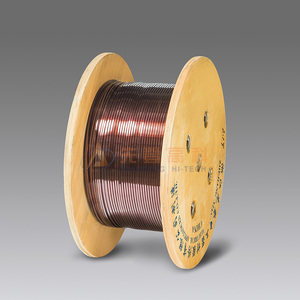-
 Find in Members
Find in Members Find in Videos
Find in Videos Find in Channels
Find in Channels
This website uses cookies to ensure you get the best experience on our website.
To learn more about our privacy policy Click herePrivacy Preference
- Tags - #Rectangular Enameled Copper Wire
-
- Last updated May 8, 2021 0 comments, 184 views, 0 likes
- No 135 Waixi Road, South Tai Lake Hi-tech Industrial Park, Huzhou , Zhejiang China - Get Directions
More from CopperWire Hua
More in Politics
Related Blogs
Archives
Some Little Knowledge About Rectangular Enameled Copper Wire
Posted By CopperWire Hua
May 8, 2021
Body
Rectangular Enameled Copper Wire enameled wires and enameled aluminum rectangular enameled wires are used as wires in electromagnets, which use electricity to generate a magnetic field. Enameled oblong or flat aluminum wire and enameled oblong or flat copper wire/tape are wound in tight coils. When an electric charge is applied, the wire generates a magnetic field. Enameled flat aluminum wire and enameled copper flat wire have a wide range of applications, including use in automobiles, motors, transformers and industrial machinery. Round enameled aluminum wires and round enameled copper wires also appear in smaller devices and household appliances, such as computers, televisions, and so on. The breakdown voltage of aluminum enameled winding wire or copper enameled winding wire depends on the thickness of the covering layer, which can be divided into three types: level 1, level 2, and level 3. The higher the grade and the thicker the insulating layer, the higher the breakdown voltage. The temperature rating indicates the temperature at which the service life of the wire is 20,000 hours. At lower temperatures, the service life of the wire is longer (approximately 2 times for every 10°C decrease). Common temperature levels are 105°C, 130°C, 155°C, 180°C and 220°C Modern flat enameled aluminum solenoid coils or flat enameled copper solenoid coils usually use one to three layers of polymer film insulation material (usually with two different compositions) to provide a tough, continuous insulation layer. Magnet wire insulation film uses (in order of increasing temperature range) polyvinyl formal or Formvar (PVF), polyurethane, polyamide (PUW), polyester (PEW), polyester-polyimide (EIW), Polyamide-polyimide (or amide-imide) (AI-EIW) and polyimide (AIW). Polyimide insulated magnet wires can work at temperatures up to 250°C. The insulation layer of thicker square or enameled aluminum or copper electromagnetic coils is usually strengthened by wrapping with high-temperature polyimide or glass fiber tape, and the complete winding is usually vacuum impregnated with insulating varnish to improve the insulation strength and long-term reliability. Winding.









Comments